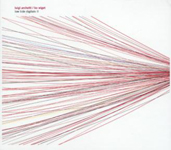|
|
 |
Dusted Reviews
Artist: Luigi Archetti & Bo Wiget Album: Low Tide Digitals II Label: Rune Grammofon Review date: Sep. 11, 2005 |

|
|
|
 |
Reenacting a Big Bang of sorts, Archetti and Wiget’s second installment of Low Tide Digitals begins with a series of cello tones being sucked backward into the field of a celestial drone. From this prelude emerges a series of interlocking barren spaces – if not really a bang, at least a dispersal of sound across a constantly expanding universe.
The listener moves through this universe without the aid of a shuttle. In fact, the journey is more akin to driving a golf cart down the highway in order to catch the distinct quality of every foot of paved ground. Archetti and Wiget are trustworthy chauffeurs. Currently based in Switzerland, Archetti is a guitarist and multimedia artist best known for his involvement with Guru Guru in the 1970s, while Wiget is a cellist who has worked with a number of renowned jazz and electronic improvisers over the last decade.
On the surface, LTDII is fairly simple, consisting mainly of cello and guitar processed by a computer, augmented by carefully deployed synthetic sounds. For much of the record little is happening – a spacious emptiness predominates. Archetti and Wiget take full advantage of the stark canvas. On “Stück 14,” a dim low-end tone emerges periodically, skewered by the flittering high-end tones of a disemboweled bagpipe. Silence interjects for a few moments only to be overtaken by a glimmer of distorted guitar arpeggios that inch forward like cracked sirens. On the second piece, “Stück 13,” the swooning of a pitch-shifted cello is enough to initiate a memorable drama. The sounds are at once captivating and elusive, graven images flashing intermittently across every surface of a blackened theater.
Like Brian Eno’s Apollo, a soundtrack to visuals of NASA’s missions to the moon of the same name, LTDII maps a remarkable environment. But unlike Eno’s work, which tends to proffer spaces stretching into infinity without discernible differentiation – a road we can all follow forever – Archetti and Wiget mark each passing moment with sounds that are as singular and diverse as the landscape of the moon itself, while maintaining that lunar hue.
Rather than a soundtrack for a collective (national) dream, LTDII is procession of sound images, the half-formed recollections of events that shape our own landscape, as well as the belated imagining of them: precisely deployed hums and hisses, ghostly radio frequencies and elegiac organ chords blur the line between the moon landing and its subsequent TV memory, while pristine low-frequency cannonballs and distended masses of dirty electric guitar further roil the slideshow.
By Alexander Provan
|







